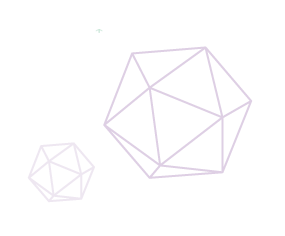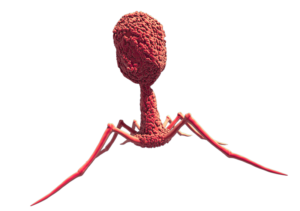PHAGE ACADEMY
Phage Therapy

Nature’s remedy for tackling superbugs and antimicrobial resistance
Phage therapy, in a nutshell
The therapeutic use of bacteriophages as a treatment for bacterial infections has existed for almost a century, but was abandoned in the West in favor of antibiotic therapy. Today, the declining efficacy of antibiotics has renewed scientific interest in this practice.
Antimicrobial resistance (AMR) is a major problem and an enormous public health challenge. According to the World Health Organization (WHO), antimicrobial resistance is one of the top ten global threats to public health. Projections are very worrying: AMR, often referred to as the “silent pandemic”, is responsible for around 1.3 million deaths a year worldwide, with an alarming possibility of rising to ten million deaths by 2050, if not before.
The exponential growth of resistance to various antimicrobial products adds to the gravity of the situation. With the efficacy of treatments against bacterial infections becoming increasingly problematic, and the search for new antibiotics facing a significant decline, bacteriophages, also known as phages, are emerging as the most promising natural solution to this worrying situation.
Conventional phage therapy is based on the use of natural phages. Bacteriophages are what we call “good” viruses that heal by infecting pathogenic bacteria in a specific way. These natural viruses have evolved in symbiosis with bacteria over time, contributing to their permanent and long-lasting efficacy. What’s more, unlike antibiotics, phages only target a specific spectrum of bacterial strains.
In a nutshell, phages attach themselves to resistant pathogenic resistant bacterial cells and inject their viral genome. This interrupts the bacterial reproductive cycle and instead produces additional phages which are released at the end of each viral cycle by lysis of the resistant pathogenic bacterial cell. This specific contamination of the resistant bacterium then spreads to the other resistant pathogenic bacteria, and the process repeats itself exponentially. It is this fast-growing viral contamination of the resistant bacterial colony that will eventually stop the targeted infection, and over which our own immune system can regain control.
Bacteriophages are therefore ideally suited to precision medicine, continuing to act where current antibiotics and antimicrobials fail. Personalized phage therapy is thus proving to be an effective therapeutic strategy for treating antimicrobial resistance and difficult-to-treat infections.
The Phagogram
Phages can be very selective in the strains of bacteria against which they are effective. It is therefore essential to carefully select them so that they match the infection being treated. Current manual methods for this process are time-consuming, labor intensive, and produce results that are challenging to interpret.
Vésale Bioscience has therefore developed an automatic phagogram, an analytical tool capable of choosing and proposing the best correspondence to a certain bacterium among a wide collection of phages. If this operation requires up to a week of work when it is organized in the laboratory by conventional processes, the automatic phagogram performs it in just a few hours. Our Inteliscript program then selects the best corresponding phages for the patient, their clinical isolate, and their indication based on a variety of objective criteria before proposing the optimal phages association to be applied to the patient.

More advantageous than antibiotics
Current research on the use of phages and their lytic proteins, in particular against multidrug-resistant bacterial infections, suggests that phage therapy has the potential to be used as either an alternative or as a complement to antibiotic treatments. Phages are considered more advantageous than antibiotics for different factors:
- Their specificity
- Their safety for the host organism but also for other beneficial bacteria such as the intestinal microbiota, thus reducing the risk of opportunistic infections.
- Their high therapeutic index that presumes few side effects, even beyond the therapeutic level.


